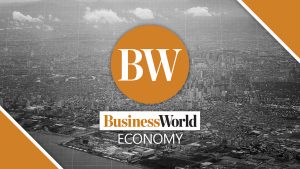Managing working capital in difficult times

SINCE 2020 and the onslaught of the pandemic, businesses have faced major challenges in the management of working capital. The problem is aggravated in the case of small and medium enterprises (SMEs). Most SMEs suffered from a decrease in cash flow and disruptions in the supply chains. The lockdowns affected consumer mobility and demand plummeted. Despite efforts to open the economy and the proclamation of the new President about his no lockdown policy, working capital issues continue to surface.
Let us go back to the basics. As defined, working capital is the difference between a company’s current assets and its current liabilities. The essence of working capital management is to ensure that the company possesses appropriate resources for its daily activities while keeping resources invested in a productive way.
The components of current assets include cash, accounts receivables and inventories. Current liabilities include accounts payable, short-term borrowings and accrued liabilities. The working capital policy of the firm will concern the levels that should be maintained in each of the components. A second policy calls for how the working capital should be financed.
The first component is the level of cash and how much of it to keep addressing liquidity concern. The company needs enough cash resources for its ordinary business needs and unexpected needs. Cash provides four important functions – transaction, precaution, compensating balance for loans/services and speculation. The goal of cash management is to meet these functions, yet not have any unnecessary excess cash.
As we know, this is the first casualty of the pandemic crisis — cash flow. Given its significance, the strategy for cash management is critical. The company needs to determine the capital needed from important transactions, the length of time it can be maintained and contingency measures to source cash during emergencies.
Liquidity must be maintained as it helps in the face of financial distress and builds the company’s credit worthiness. But too much cash reflects poor allocation of resources because it is generally non-earning. Cash is like inventory with two opposite behaving costs — carrying cost and ordering costs. At the margin, orders costs are reduced when larger orders are placed, but carrying costs rise. The economic solution is to order the needed cash such that marginal reduction in order cost equals marginal carrying cost.
Cash budgeting becomes an important exercise. Ideally, the cash budget should show a positive cash flow with more money coming in than going out. Cash could have been used overstocking real inventory despite less demand. Giving lengthy payment terms to clients can lead to cash shortage. Overspending on clients and overtrading related to new business prospects can have the same effect.
In a crisis setting, there is the tendency to err on overstocking of cash despite its cost. Large increase in cash is not surprising given the errors in forecasting of demand. At this stage, it is better to err on the conservative side because of greater volatility in the environment. Measures to decrease cash outflow through prudent management of variable costs are also warranted.
The firm must improve the receivable process. The organization needs to generate faster cash flows from receivables and technology can be a major support. Digital payments, online deliveries and internet/smartphone transactions have been a boost to speed up the process. In many instances, the use of digital solutions can be a life saver. In fact, it is now the new normal.
The inventory audit should help determine appropriate supply issues and avoid shortages. Changes in the supply chain will impact on the modes and timing of deliveries. While just-in-time models appeal in normal times, the likelihood of shortage and absence of key inputs will lead to lost sales. The changes in the logistical setup will require taking a precautionary stance in inventory buildup as order-taking time adjusts to the new reality.
Buttonwood of The Economist made this commentary on inventory cycles that apply, in general, to all working capital components. He wrote: “Just-in-time production assumes a largely frictionless world — of open borders, predictable demand and low transport costs. This can no longer be relied upon. Inventory is a form of insurance against unexpected delays. The trade-off between efficiency and self-insurance, between just-in-time and just-in-case, has shifted markedly towards the latter.”
A major challenge is making alternative financing options available to ensure the steady flow of working capital. Prudent management of short term financing preserves liquidity amidst uncertainty. The firm should explore the right financing instruments — regular credit lines, revolving credit agreement, collateralized loans, discounting of receivables, factoring, inventory financing, and yes, even trade credits. A good environment scan should reveal the firm’s access and availability to banking service, the level of interest rates, inflation in the economy and the level of competitiveness within one’s industry.
Payables represent a fund source but note how trade credit can be expensive especially if discounts were offered. The firm must compute properly the cost of not taking such discounts against commercial debt. Advance planning will allow fulfillment of credit needs beyond the ordinary. Relationships with suppliers must be protected.
In sum, working capital management requires a balancing act of the levels involved in the major components cited — cash, receivables, inventory, payables, and financing options. In all components, the tradeoffs are between ordering and holding costs. Management of working capital these days require a more conservative stance that favors the just-in-case philosophy.
The views expressed herein are his own and does not necessarily reflect the opinion of his office as well as FINEX.
Benel Dela Paz Lagua was previously EVP and chief development officer at the Development Bank of the Philippines. He is an active FINEX member and an advocate of risk-based lending for SMEs. Today, he is independent director in progressive banks and in some NGOs.




